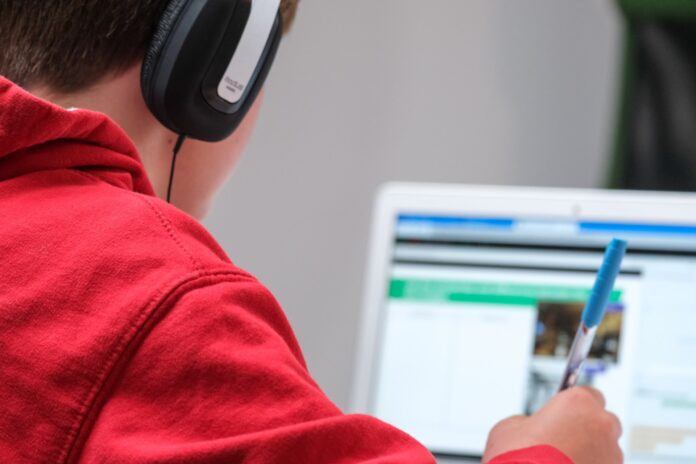In the recent past, language classes have incorporated the use of technology to assist and enhance language learning. For example, teachers integrate several forms of technology to support their teaching making the learning process more engaging. Additionally, technology helps teachers to provide more authentic examples of the target culture.
Suppose you want to learn English, you should find out what are the best apps to learn English. These apps offer a more authentic way to learn the language as they allow you to converse with native speakers to improve your command of their language.
What is Technology Enhanced Learning (TELL)?
TELL is a teaching approach that requires the use of technological resources to promote teaching and learning a second language. Moreover, using the latest technologies in the classroom has emerged as the ideal complement to gaining and mastering a new language.
For example, English courses that come with technological support are regarded as the most effective by students and teachers. Mobile apps have become the most preferred way of learning a new language in the current digital world.
Significance of TELL in Language Classes
Acts As a Complementary Tool for Teachers in Language Classes
Educational technologies are beneficial for teachers in many ways. Language experts claim that traditional education is no longer sufficient. Moreover, it is becoming increasingly essential for teachers to motivate their students when presenting learning materials in classrooms.
In this regard, hardcopy books are diminishing as new technologies present richer content and more interactive material. For example, teachers can share videos and other simulations as part of study material.
Technology Makes Language Learning More Exciting and Interactive For Students
Studies have revealed that the use of technology in and outside the classroom makes students more motivated. For example, students can use devices to learn a new language using features such as voice recognition and interactive multimedia exercises.
Moreover, younger students will find learning from a tablet or smartphone more stimulating than with regular textbooks. Besides that, technology transforms students from passive listeners to active learners.
This approach allows for a more insightful and inspiring linguistic immersion. Language students can study the new language or, let’s say, learn Chinese vocabulary using a wide range of comprehensive apps that synchronize without an internet connection.
It Makes It Easy To Monitor and Manage Students
Technology makes it effortless for teachers to keep student lists, manage courses, and evaluate students with exams and tests. Most of these educational tasks are administrative in nature. Online educational platforms offer numerous functionalities that can be customized to the needs of academic centres.
Besides that, the online platforms also make it easier for teachers to evaluate student performance and determine whether they are making progress. As a result, teachers and learners achieve the set objectives within the specified time.
Creates A Unique Experience For Both Learners And Teachers
Educational technological innovations have turned English classrooms into a more engaging environment. For example, teachers and learners can share, debate, and form opinions. This approach makes the learning environment more participatory hence promoting innovation.
As a result, language learning classes stopped being bland where the teacher just scribbles something on the blackboard and explains. Instead, it has become more active in all sense making the learning environment more effective.
For instance, students become much more involved when a teacher uses virtual whiteboards, online classes, and interactive multimedia content. In the end, the learning experience is unmatched.
Technology Promotes Interactivity And Collaboration During Learning
In the past, teachers were regarded as “knowledge disseminators.” In this learning model, the student followed the classes passively, and the student had no contribution to make.
However, technology has transformed the learning process making it more creative and participative. It has prepared a foundation of knowledge outside the classroom by enabling students to engage with the course content.
After that, when the students come to class, they can share this knowledge with the students and the teacher. This allows the students to demonstrate what they learned, helping them reinforce their understanding in a coordinated way.
Education experts argue that Educational technology allows students to be better prepared for class. It also provides the teachers with attractive resources that enable them to make their classes more human and friendly. Additionally, it also offers the students an opportunity to take part in class regardless of their level.
Final Thoughts
Many institutions were slowly implementing technology-enhanced learning. However, the COVID-19 pandemic that hit the world in 2020 forced them to expedite the process. Studies have revealed that governments and private entities have invested heavily in educational technology to transform the education sector.
In this regard, the use of technology in education is no longer an afterthought. In fact, the 21st-century learner is tech-savvy and would not be stimulated by traditional forms of learning.
Finally, there is still more to be done to make technology-enhanced learning a success. But, students and teachers should brace themselves for a better learning environment in the future.




![Merchant Navy Recruitment 2024: [4000+ Posts]: How To Apply Online? Merchant Navy Recruitment 2024: [4000+ Posts]: How To Apply Online?](https://futurewithtech.com/wp-content/uploads/2024/05/Indian-Merchant-Navy-Recruitment-2024-218x150.jpg)
